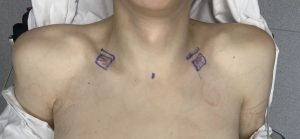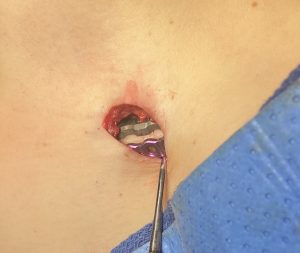Background: The clavicle is composed of three differently shaped bone segments. There is an inner mid shaft segment which is straight and there is inner and outer bone segments that have reverse curved shapes. The lengths of each bone segment are roughly equal. While their bone lengths are roughly equal their thicknesses are not.The inner curved third is the thickest, the outer curved third is next in thickness and the straight middle third is the thinnest.
In doing clavicle reduction osteotomies tin shoulder narrowing surgery the bone removed can theoretically be taken from anywhere along the length of the bone. But due to the necessity of keeping the bone removal closest to the most favorable location of the access incision the bone resection is done at the inner half of the clavicle. Specifically it is removed at the inner half of the straight mid-shaft segment of the bone.
When putting the bone segments back together, due to the removal of some length of the mid-shaft, the two oppositely curved bone ends are pulled closer together. This anatomic change has an impact on how the bone is put back together. Since straight plates are used to put the two bone ends together it is important to be cognizant of exactly where the bone removed and the length of the fixation plate used. Too long of a fixation plate may have either end too far onto the curved sections of the bone being unable to place screws into all holes in the plate.
Case Study: This tall female presented for shoulder narrowing surgery with a bideltoid distance of 48cms. Her lean frame allowed for good clavicle show.
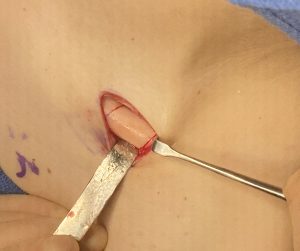
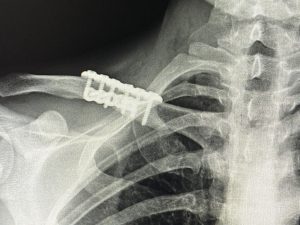
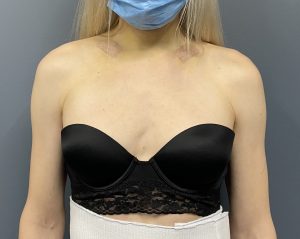
The location of bone removal at the mid shaft of the clavicle influences how many holes of the fixation plate can have screws placed. Fixation plates are straight while shortening the length of the clavicle pulls the two curved ends closer together, limiting how much of a straight fixation plate can be securely applied.
Case Highlights:
1) In clavicle reduction osteotomies the removed bone segment is taken at the inner half of the clavicle.
2) In resecting clavicle bone for shoulder narrowing the typical approach is to take it from the straight mid-shaft section to allow the application of a short straight fixation plate and screws.
3) The limit as to how much clavicle bone can be removed is related the application of adequate fixation…not concerns about affecting arm range of motion.
Dr. Barry Eppley
World-Renowned Plastic Surgeon




